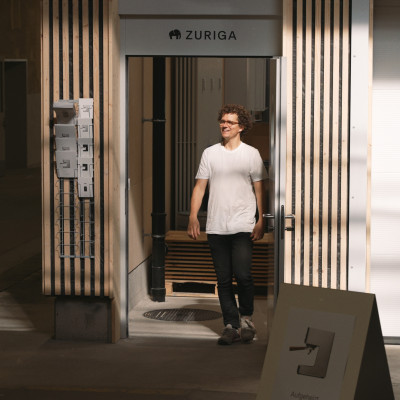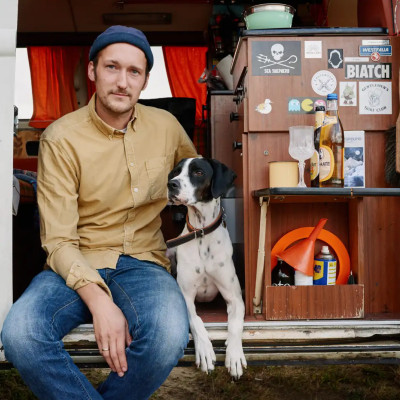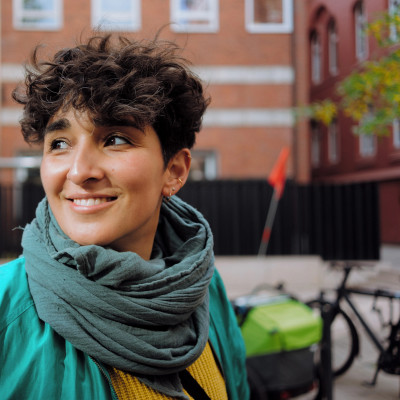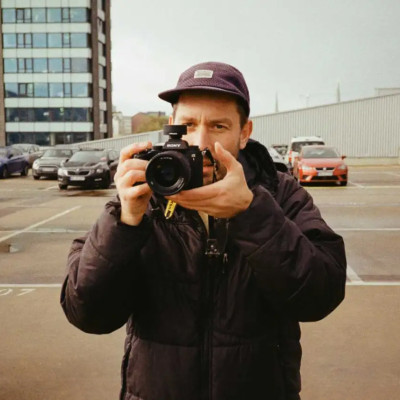Protesting with good pictures
Tim is a bicycle activist, photographer and filmmaker. He has developed a new visual language for muli and wants to use it to tell formative stories.

Tim, you’ve been a muli rider from the very beginning, you run the blog radpropaganda.org and have already launched many cycling initiatives in Hamburg. These include bicycle workshops for refugees at Kampnagel, the "Space for Bicycle Culture" in Hamburg’s city centre – and some pro-bike campaigns online or "classically" on site are also organized by you. Has anything changed in all these years?
In general, cycling has become a topic of public debate. Many of the things that we used to advocate on the streets with the Critical Mass or that we propagated online are now on their way. New cycling infrastructure is also slowly becoming visible in Hamburg. There are subsidies for the purchase of cargo bikes and things like job bike leasing and public bike sharing. These are all steps in the right direction. The lockdowns have certainly also contributed to the infrastructure. In cities like Paris and Berlin, car lanes were turned into pop-up bikelanes during the pandemic. In Hamburg, the political decision-makers were rather hesitant, while elsewhere protected bikelanes have already been made permanent, here there have been isolated temporary traffic trials – i.e. yellow lines on the roads. But progress is being made, and two years later the first pop-up bikelanes have been permanently installed here too. Many things take a long time and are often not consistent – there are reasons for this: Planning in the regulations – but also in people’s minds – is still generally car-centric. When people talk about traffic, they mean car traffic. Unfortunately, this is still all too often reflected in the implementation of new infrastructure on the roads.
Has the progress and the broader debate also changed your perspective or your approach to the topic?
Of course, it’s all a process. Changes in the debate, the situation on the ground, personal circumstances and everyday experiences – everything is constantly changing perspective. I am increasingly concerned with what is happening right on my doorstep and in my city. I am committed to people-friendly mobility in my own neighborhood and try to point out and name the unequal distribution of space in the city using practical everyday examples. It’s not okay when cycle paths and footpaths are parked up; that our children are fenced off in playgrounds while we have given up public urban space to waist-high cars.
When we talk about traffic, we mean car traffic.
What can we do about it?
We should stop accepting that it is too dangerous for small children to run around on their doorstep. So the structural problems still exist. Despite all the progress that has been made, there is still a long way to go before we have a people-friendly city. But I believe it is important to use this small progress to reinforce and multiply the positive images. Unlike in the past, current developments are giving me more and more opportunities to do this. As a photographer and designer, I have the opportunity to protest with positive images, document new things and contrast them with yesterday’s outdated ones.
You accompany muli as a photographer with the camera but also as a consultant. You also took the pictures for the new website. What guided you?
My aim was to create a world of images with motifs that are close to people who cycle a lot themselves. So I looked for "models" such as Badrieh or Felix among my friends and acquaintances – and accompanied them with my muli and a small photo set-up. It was important to me to stage as little as possible. The result was a mixture of street photography and documentary "being there". Even though the weather wasn’t always on our side, I really enjoyed this way of working and I’m delighted with the result.
What was the reason for this rather unconventional approach?
Fortunately, I don’t have to come up with a life-conscious stock image persona for muli. There are simply wonderful people who already ride muli or are enthusiastic about it. Why not tell their stories? The bike doesn’t even have to be in the foreground. It’s a means to a good end and all I have to do is capture it in pictures. That helps the product and the transport revolution – and I enjoy working with good people. I can hardly imagine anything more sustainable.




Was that a specification for the shoot?
No. I would describe it more as a creative process. I was in direct coordination with Sören from muli and open to input from the protagonists. I had a free hand in the implementation. I like to work on a brand at a moment when not everything is set and I can actively and holistically shape it. Of course, that doesn’t always work everywhere. If possible, I try not to limit myself to one role, e.g. as a photographer, but also to influence the product and the people behind it – so that something new is created together.
We also took a more artistic approach to the product shots in my studio. Due to the global supply bottlenecks during the pandemic, we had to be very flexible and shoot over a long period of time. This in turn gave me the opportunity to spend more time with the bikes and pictures and to go into more detail – I think the extra effort was worth it … I now really know every screw.
Was it an advantage that you’ve known muli for a long time?
Absolutely. I’ve been riding a muli myself since the Startnext crowdfunding in 2017. It has helped me with complete removals, bulk purchases and photo productions. At some point, the child seat, the canopy and family trips were added. Just as the muli grew with me, I am now growing with the brand.
What would you like to improve?
We all make compromises somewhere. I think more important than "wanting to do everything right" is to listen to feedback and criticism, to remain open to discourse and to constantly reflect on your own work. Specifically, I’m very excited about the new version of the muli rain deck – laughs – and in terms of my work, the selection of protagonists that will be featured in the relaunch of the site is not yet diverse enough for me personally. But we are only at the beginning of the series and will hopefully be able to introduce many more interesting people.
And hopefully you haven’t reached the end of your activism yet. What else are you planning?
For me, activism works best when you create scenarios in which people can experience a possible ideal state. This is another reason why the Critical Mass has achieved so much. It is a very impressive experience when thousands of cyclists share the space that is otherwise reserved for cars. And because you can’t start early enough – I am particularly pleased to be helping to push the first "Bicibus" in Hamburg. The campaign was inspired by an initiative in Barcelona, where children travel to school together as a group every Friday. In the beginning it was just a few families on bicycles, scooters or roller skates, but then it became a movement. I hope it will also succeed in Hamburg.
Thank you for the interview!
Find out more about Tim at instagram.com/tm_kaiser and at tmksr.com and about cycling culture at Radpropaganda.org or instagram.com/radpropaganda.



